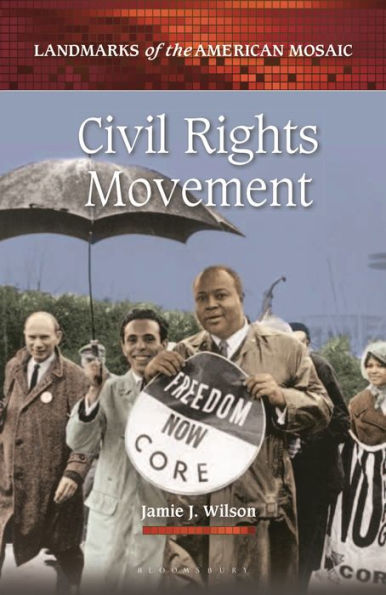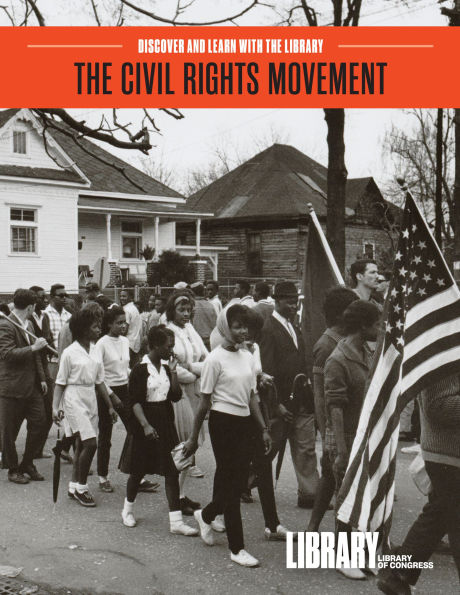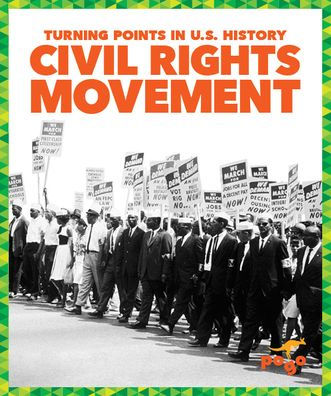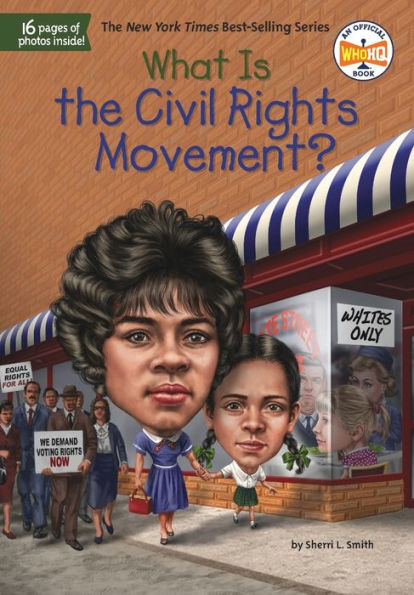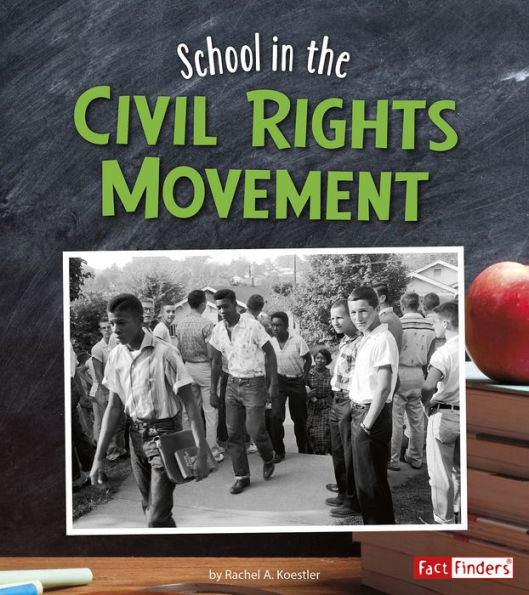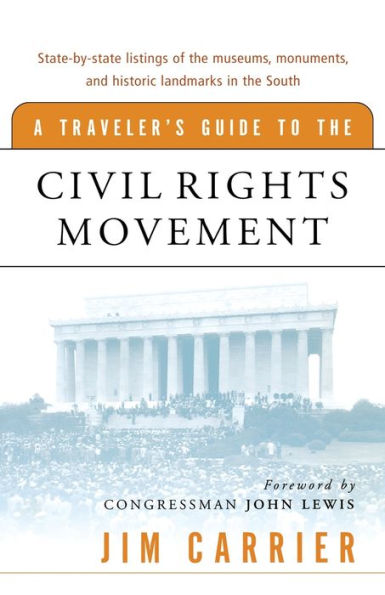Home
From Picket-Signs to Picking Presidents: A Grandson of the Civil Rights Movement's Assessment of the Democratic Party and Its Quest for Equal Rights
Barnes and Noble
Loading Inventory...
From Picket-Signs to Picking Presidents: A Grandson of the Civil Rights Movement's Assessment of the Democratic Party and Its Quest for Equal Rights in Bloomington, MN
Current price: $16.04

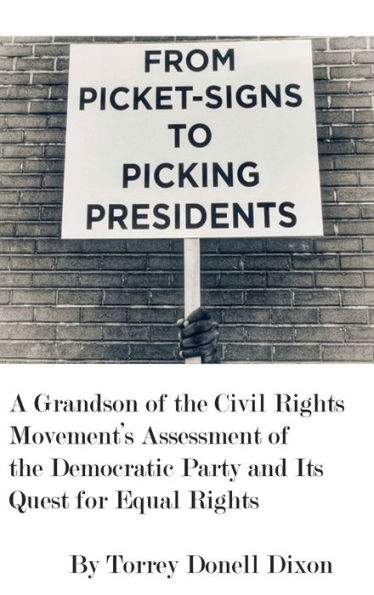
From Picket-Signs to Picking Presidents: A Grandson of the Civil Rights Movement's Assessment of the Democratic Party and Its Quest for Equal Rights in Bloomington, MN
Current price: $16.04
Loading Inventory...
Size: OS
When Black Lives Matter activists Marissa Johnson and Mara Williford stepped to the podium, abruptly took the microphone from Democratic presidential candidate Senator Bernie Sanders, and began speaking at a social security protection rally in Seattle, during the heat of the 2016 Democratic presidential primary race on August 8, 2015, they were giving a voice to the voiceless victims of police brutality throughout the nation. More than interrupting the scheduled events of the rally that day, however, the activists sought to disrupt a Democratic Party agenda which has failed to give meaningful attention to the plight of African Americans and others in the pursuit of equality for decades.
In his novel work, From Picket-Signs to Picking Presidents, Torrey Donell Dixon—a young African American attorney who was born and raised in Danville, Virginia, the last capital of the Southern Confederacy and the site of the Civil Rights Movement's infamous "Bloody Monday" police attack on local demonstrators in June of 1963--gives attention to the failure of Democratic presidential agendas to pursue the goal of equality in the decades since the Civil Rights Movement.
The Civil Rights Movement forced President Lyndon B. Johnson and Congress to look beyond the political expediency of the moment. The Democratic Party, who controlled Congress and the White House, risked losing the support of its Southern constituency for a generation. Still, the movement forced a majority of legislators and the president to look beyond the red and blue of the state-by-state Electoral College map, and witness the struggle of black bodies when attempting to drink from the waters of public access in the streets of cities throughout the South. As a result, Congress crafted, and the president signed three of the most successful pieces of legislation in American history--the Civil Rights Act of 1964, the Voting Rights Act of 1965, and the Fair Housing Act of 1968.
As a result of passage of the Voting Rights Act, the movement for equality would transition from protests to party politics. The Act predictably and dramatically increased the number of black voters but also slowed the marches which had traveled such a long road in such a short time. The Act exacerbated tensions of an already splintered movement by presenting the ballot as a new and more appealing option to both the "bullet" of violence and to the "billy sicks" of nonviolent resistance. Meeting resistance from the Republican Party, African American voters began what would become a longstanding practice of casting the majority of their ballots in favor of Democratic presidents.
The allegiance of African American voters to the Democratic Party had matured by the moment on August 27, 1983 when Rev. Jesse Louis Jackson, Sr., stepped to the spot where Rev. Dr. Martin Luther King, Jr. had told the world about his dream of equality, two decades earlier, and announced his candidacy for the Democratic nomination for president. "We must continue to dream, but the dream of 1963 must be expanded to meet the realities of this time. Hands that picked cotton in 1864 will pick a president in 1984," Jackson proclaimed. Although Jackson's prediction fell short in that particular year, such hands have played a significant part in picking every Democratic president since the early 1960s.
Dixon focuses attention on the rhetoric and agendas of these Democratic presidents in such decades, and on what their hands have given in return for being picked. He argues that, "while their rhetoric has reached further, the presidential agendas of Jimmy Carter, Bill Clinton, and Barack Obama simply did not go far enough to reach the depths of inequality in America. Such campaigns and agendas have only reached far enough to shake hands, at campaign rallies, with those Americans in swing states who are in love with the ideal of equality but who remain horrified to stare into the face of the reality of inequality in America."
Dixon argues that the relaxing of the reach for equality has not, however, been limited to Democratic presidential agendas, but continues to permeate much of our society. It is heard in the shouts of "All lives matter!" as an effort to drown out the chants of "Black lives matter!" To make all lives matter, the movement for equality must be specifically targeted at inequality. "As with our education and wealth gap, the legacy of gender discrimination, homophobic discrimination, and poverty in America, it is much easier to close our eyes and pretend that the monster of American racism has suddenly vanished. The viral dissemination of cellular phone videos of black children being brutalized and killed at the hands of police-- as well as the election to president of a candidate who openly promoted sentiments of hate and exclusion--has bared the ugliness of the beast for all of the world to see," Dixon writes.
In his novel work, From Picket-Signs to Picking Presidents, Torrey Donell Dixon—a young African American attorney who was born and raised in Danville, Virginia, the last capital of the Southern Confederacy and the site of the Civil Rights Movement's infamous "Bloody Monday" police attack on local demonstrators in June of 1963--gives attention to the failure of Democratic presidential agendas to pursue the goal of equality in the decades since the Civil Rights Movement.
The Civil Rights Movement forced President Lyndon B. Johnson and Congress to look beyond the political expediency of the moment. The Democratic Party, who controlled Congress and the White House, risked losing the support of its Southern constituency for a generation. Still, the movement forced a majority of legislators and the president to look beyond the red and blue of the state-by-state Electoral College map, and witness the struggle of black bodies when attempting to drink from the waters of public access in the streets of cities throughout the South. As a result, Congress crafted, and the president signed three of the most successful pieces of legislation in American history--the Civil Rights Act of 1964, the Voting Rights Act of 1965, and the Fair Housing Act of 1968.
As a result of passage of the Voting Rights Act, the movement for equality would transition from protests to party politics. The Act predictably and dramatically increased the number of black voters but also slowed the marches which had traveled such a long road in such a short time. The Act exacerbated tensions of an already splintered movement by presenting the ballot as a new and more appealing option to both the "bullet" of violence and to the "billy sicks" of nonviolent resistance. Meeting resistance from the Republican Party, African American voters began what would become a longstanding practice of casting the majority of their ballots in favor of Democratic presidents.
The allegiance of African American voters to the Democratic Party had matured by the moment on August 27, 1983 when Rev. Jesse Louis Jackson, Sr., stepped to the spot where Rev. Dr. Martin Luther King, Jr. had told the world about his dream of equality, two decades earlier, and announced his candidacy for the Democratic nomination for president. "We must continue to dream, but the dream of 1963 must be expanded to meet the realities of this time. Hands that picked cotton in 1864 will pick a president in 1984," Jackson proclaimed. Although Jackson's prediction fell short in that particular year, such hands have played a significant part in picking every Democratic president since the early 1960s.
Dixon focuses attention on the rhetoric and agendas of these Democratic presidents in such decades, and on what their hands have given in return for being picked. He argues that, "while their rhetoric has reached further, the presidential agendas of Jimmy Carter, Bill Clinton, and Barack Obama simply did not go far enough to reach the depths of inequality in America. Such campaigns and agendas have only reached far enough to shake hands, at campaign rallies, with those Americans in swing states who are in love with the ideal of equality but who remain horrified to stare into the face of the reality of inequality in America."
Dixon argues that the relaxing of the reach for equality has not, however, been limited to Democratic presidential agendas, but continues to permeate much of our society. It is heard in the shouts of "All lives matter!" as an effort to drown out the chants of "Black lives matter!" To make all lives matter, the movement for equality must be specifically targeted at inequality. "As with our education and wealth gap, the legacy of gender discrimination, homophobic discrimination, and poverty in America, it is much easier to close our eyes and pretend that the monster of American racism has suddenly vanished. The viral dissemination of cellular phone videos of black children being brutalized and killed at the hands of police-- as well as the election to president of a candidate who openly promoted sentiments of hate and exclusion--has bared the ugliness of the beast for all of the world to see," Dixon writes.
When Black Lives Matter activists Marissa Johnson and Mara Williford stepped to the podium, abruptly took the microphone from Democratic presidential candidate Senator Bernie Sanders, and began speaking at a social security protection rally in Seattle, during the heat of the 2016 Democratic presidential primary race on August 8, 2015, they were giving a voice to the voiceless victims of police brutality throughout the nation. More than interrupting the scheduled events of the rally that day, however, the activists sought to disrupt a Democratic Party agenda which has failed to give meaningful attention to the plight of African Americans and others in the pursuit of equality for decades.
In his novel work, From Picket-Signs to Picking Presidents, Torrey Donell Dixon—a young African American attorney who was born and raised in Danville, Virginia, the last capital of the Southern Confederacy and the site of the Civil Rights Movement's infamous "Bloody Monday" police attack on local demonstrators in June of 1963--gives attention to the failure of Democratic presidential agendas to pursue the goal of equality in the decades since the Civil Rights Movement.
The Civil Rights Movement forced President Lyndon B. Johnson and Congress to look beyond the political expediency of the moment. The Democratic Party, who controlled Congress and the White House, risked losing the support of its Southern constituency for a generation. Still, the movement forced a majority of legislators and the president to look beyond the red and blue of the state-by-state Electoral College map, and witness the struggle of black bodies when attempting to drink from the waters of public access in the streets of cities throughout the South. As a result, Congress crafted, and the president signed three of the most successful pieces of legislation in American history--the Civil Rights Act of 1964, the Voting Rights Act of 1965, and the Fair Housing Act of 1968.
As a result of passage of the Voting Rights Act, the movement for equality would transition from protests to party politics. The Act predictably and dramatically increased the number of black voters but also slowed the marches which had traveled such a long road in such a short time. The Act exacerbated tensions of an already splintered movement by presenting the ballot as a new and more appealing option to both the "bullet" of violence and to the "billy sicks" of nonviolent resistance. Meeting resistance from the Republican Party, African American voters began what would become a longstanding practice of casting the majority of their ballots in favor of Democratic presidents.
The allegiance of African American voters to the Democratic Party had matured by the moment on August 27, 1983 when Rev. Jesse Louis Jackson, Sr., stepped to the spot where Rev. Dr. Martin Luther King, Jr. had told the world about his dream of equality, two decades earlier, and announced his candidacy for the Democratic nomination for president. "We must continue to dream, but the dream of 1963 must be expanded to meet the realities of this time. Hands that picked cotton in 1864 will pick a president in 1984," Jackson proclaimed. Although Jackson's prediction fell short in that particular year, such hands have played a significant part in picking every Democratic president since the early 1960s.
Dixon focuses attention on the rhetoric and agendas of these Democratic presidents in such decades, and on what their hands have given in return for being picked. He argues that, "while their rhetoric has reached further, the presidential agendas of Jimmy Carter, Bill Clinton, and Barack Obama simply did not go far enough to reach the depths of inequality in America. Such campaigns and agendas have only reached far enough to shake hands, at campaign rallies, with those Americans in swing states who are in love with the ideal of equality but who remain horrified to stare into the face of the reality of inequality in America."
Dixon argues that the relaxing of the reach for equality has not, however, been limited to Democratic presidential agendas, but continues to permeate much of our society. It is heard in the shouts of "All lives matter!" as an effort to drown out the chants of "Black lives matter!" To make all lives matter, the movement for equality must be specifically targeted at inequality. "As with our education and wealth gap, the legacy of gender discrimination, homophobic discrimination, and poverty in America, it is much easier to close our eyes and pretend that the monster of American racism has suddenly vanished. The viral dissemination of cellular phone videos of black children being brutalized and killed at the hands of police-- as well as the election to president of a candidate who openly promoted sentiments of hate and exclusion--has bared the ugliness of the beast for all of the world to see," Dixon writes.
In his novel work, From Picket-Signs to Picking Presidents, Torrey Donell Dixon—a young African American attorney who was born and raised in Danville, Virginia, the last capital of the Southern Confederacy and the site of the Civil Rights Movement's infamous "Bloody Monday" police attack on local demonstrators in June of 1963--gives attention to the failure of Democratic presidential agendas to pursue the goal of equality in the decades since the Civil Rights Movement.
The Civil Rights Movement forced President Lyndon B. Johnson and Congress to look beyond the political expediency of the moment. The Democratic Party, who controlled Congress and the White House, risked losing the support of its Southern constituency for a generation. Still, the movement forced a majority of legislators and the president to look beyond the red and blue of the state-by-state Electoral College map, and witness the struggle of black bodies when attempting to drink from the waters of public access in the streets of cities throughout the South. As a result, Congress crafted, and the president signed three of the most successful pieces of legislation in American history--the Civil Rights Act of 1964, the Voting Rights Act of 1965, and the Fair Housing Act of 1968.
As a result of passage of the Voting Rights Act, the movement for equality would transition from protests to party politics. The Act predictably and dramatically increased the number of black voters but also slowed the marches which had traveled such a long road in such a short time. The Act exacerbated tensions of an already splintered movement by presenting the ballot as a new and more appealing option to both the "bullet" of violence and to the "billy sicks" of nonviolent resistance. Meeting resistance from the Republican Party, African American voters began what would become a longstanding practice of casting the majority of their ballots in favor of Democratic presidents.
The allegiance of African American voters to the Democratic Party had matured by the moment on August 27, 1983 when Rev. Jesse Louis Jackson, Sr., stepped to the spot where Rev. Dr. Martin Luther King, Jr. had told the world about his dream of equality, two decades earlier, and announced his candidacy for the Democratic nomination for president. "We must continue to dream, but the dream of 1963 must be expanded to meet the realities of this time. Hands that picked cotton in 1864 will pick a president in 1984," Jackson proclaimed. Although Jackson's prediction fell short in that particular year, such hands have played a significant part in picking every Democratic president since the early 1960s.
Dixon focuses attention on the rhetoric and agendas of these Democratic presidents in such decades, and on what their hands have given in return for being picked. He argues that, "while their rhetoric has reached further, the presidential agendas of Jimmy Carter, Bill Clinton, and Barack Obama simply did not go far enough to reach the depths of inequality in America. Such campaigns and agendas have only reached far enough to shake hands, at campaign rallies, with those Americans in swing states who are in love with the ideal of equality but who remain horrified to stare into the face of the reality of inequality in America."
Dixon argues that the relaxing of the reach for equality has not, however, been limited to Democratic presidential agendas, but continues to permeate much of our society. It is heard in the shouts of "All lives matter!" as an effort to drown out the chants of "Black lives matter!" To make all lives matter, the movement for equality must be specifically targeted at inequality. "As with our education and wealth gap, the legacy of gender discrimination, homophobic discrimination, and poverty in America, it is much easier to close our eyes and pretend that the monster of American racism has suddenly vanished. The viral dissemination of cellular phone videos of black children being brutalized and killed at the hands of police-- as well as the election to president of a candidate who openly promoted sentiments of hate and exclusion--has bared the ugliness of the beast for all of the world to see," Dixon writes.
